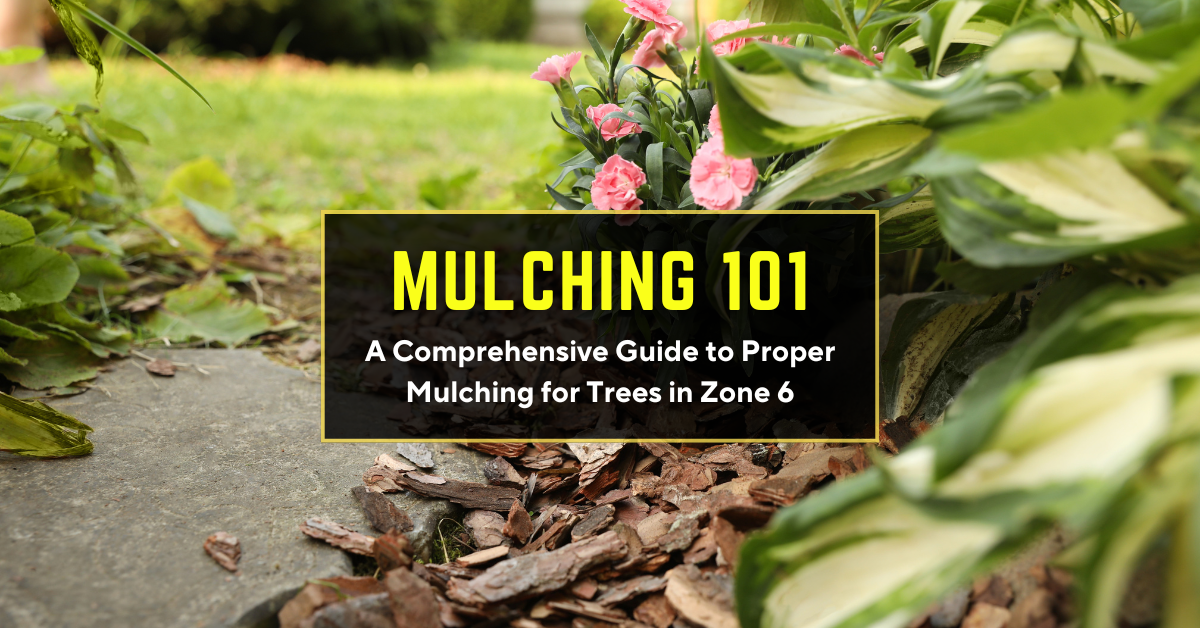Mulching 101: Guide for OMAHA (Zone 6)
Mulching Matters: A Comprehensive Guide to Proper Mulching for Trees in Omaha, Nebraska (Zone 6)
Greetings, tree enthusiasts of Omaha, Nebraska! As proud stewards of our urban forest, it's essential to understand the importance of proper mulching for the health and vitality of our trees. In this comprehensive guide, we'll explore the hows and whys of mulching trees in our unique climate zone, Zone 6. Let's dive in!
Why Mulch?
Mulching mimics conditions of the natural environment where trees thrive the best, a forest! Mulching offers a myriad of benefits for trees, soil, and overall landscape health. Here's why mulching matters:
Moisture Retention: In Omaha's Zone 6 climate, where summers can be hot and dry, mulch acts as a protective barrier, reducing water evaporation from the soil and helping trees retain moisture during periods of drought.
Weed Suppression: Mulch inhibits the growth of weeds and unwanted vegetation around trees, reducing competition for water, nutrients, and sunlight and promoting healthier tree growth.
Soil Insulation: Mulch acts as a natural insulator, regulating soil temperature and protecting tree roots from temperature extremes, especially during the harsh winters and fluctuating temperatures of Zone 6.
Soil Health: As organic mulch decomposes, it enriches the soil with nutrients, improves soil structure, and enhances microbial activity, creating a fertile environment for tree roots to thrive.
Erosion Control: Trees react to mulch by developing more fibrous roots. This helps prevent soil erosion by reducing the impact of rainfall and runoff, stabilizing the soil surface, and minimizing soil compaction, particularly on sloped or vulnerable areas.
How to Mulch Properly:
Now that we understand why mulching is beneficial, let's explore how to mulch trees properly in Omaha, Nebraska's Zone 6:
Choose the Right Mulch: Opt for organic mulches such as shredded bark, wood chips, or compost, which decompose slowly and enrich the soil over time. Local mulch, created from chipping logs, branches, and other tree debris, is a great choice to minimize environmental impact & maintain appropriate biodiversity (see bonus tips). Avoid using inorganic mulches like rubber or plastic, as they can hinder soil health and tree growth.
Prepare the Area: Before mulching, remove any weeds, debris, or existing mulch from around the base of the tree. Ensure the area is clear and level to create a clean canvas for mulch application.
Apply Mulch Correctly: Spread a layer of mulch 2-4 inches thick around the base of the tree, extending out to the drip line or beyond, if possible! Your trees will thank you for any amount of turf you are willing to give up. Less competition means happier trees! Keep the mulch several inches away from the trunk to prevent moisture buildup and discourage pests and diseases.
Maintain Mulch Depth: Monitor the depth of mulch regularly and replenish i
Spread as needed to maintain a consistent layer. Avoid piling mulch against the trunk, as this can create a moist environment conducive to rot and fungal diseases.
Mulch in Spring or Fall: Mulch trees in Omaha, Nebraska's Zone 6 in spring or fall when soil moisture levels are typically higher and temperatures are milder. Avoid mulching too early in spring, as it may insulate the soil and delay warming.
Bonus Tips:
Consider using native or locally sourced mulch materials to support regional ecosystems and reduce environmental impact.
Mulch newly planted trees to provide them with a strong start and promote establishment.
Monitor mulched areas for signs of pests, diseases, or root girdling, and take appropriate action if issues arise.
By following these guidelines and incorporating proper mulching practices into our tree care routine, we can nurture healthier, more resilient trees and contribute to the beauty and sustainability of our urban landscape in Omaha, Nebraska's Zone 6.
Happy mulching!

